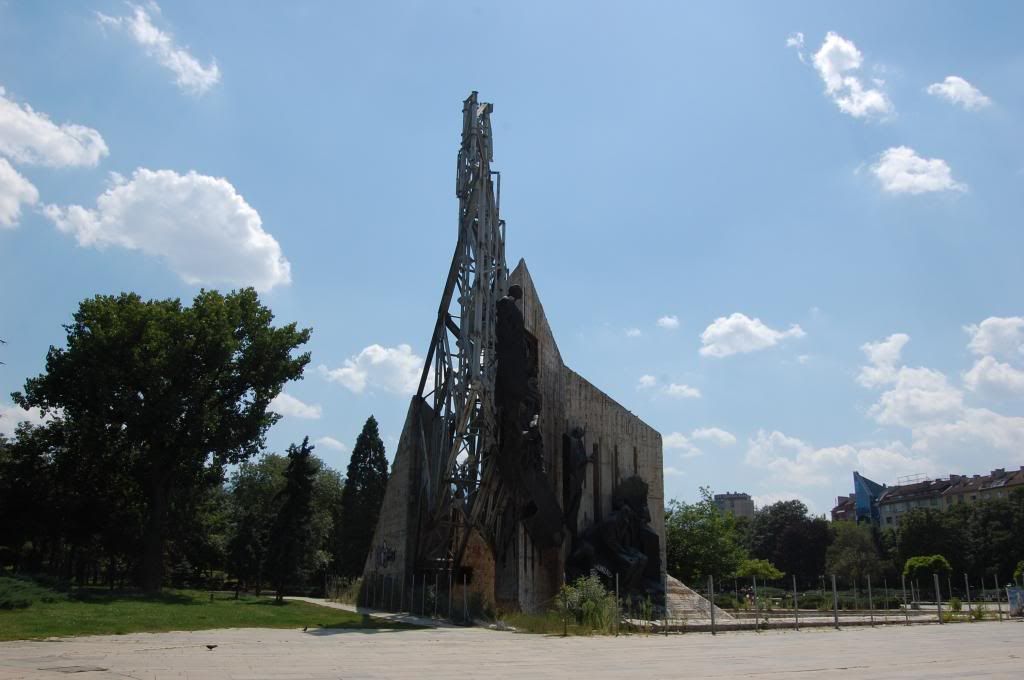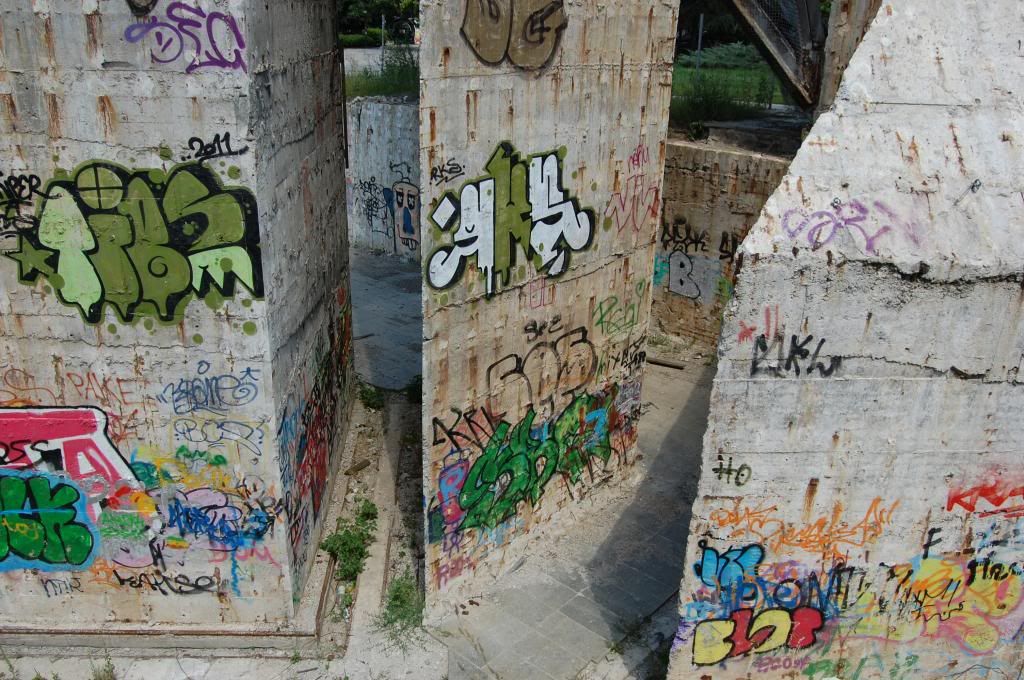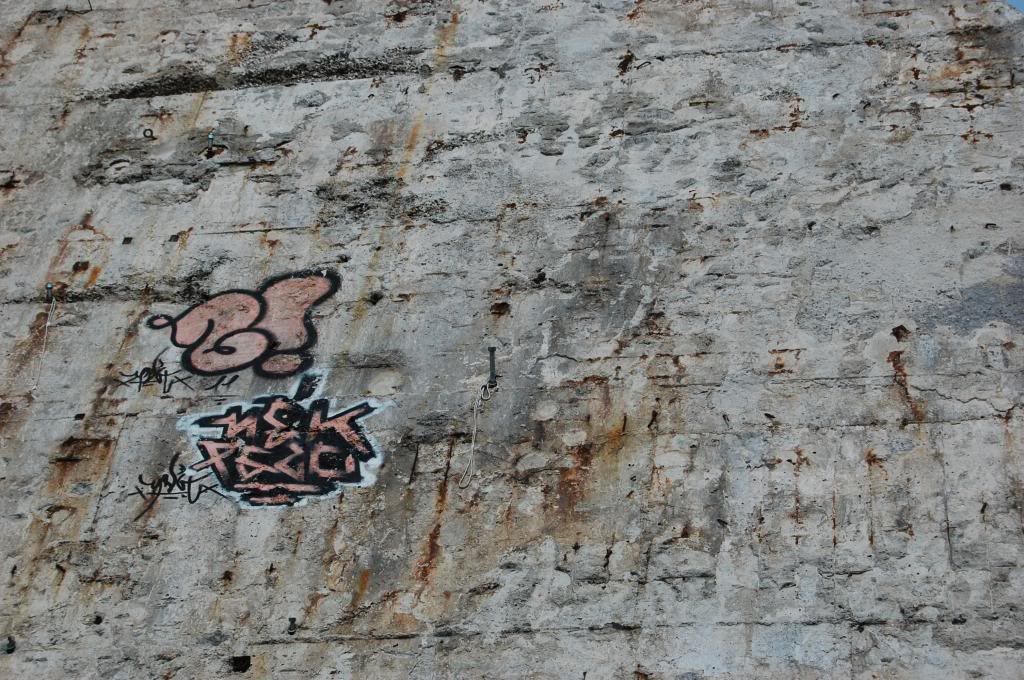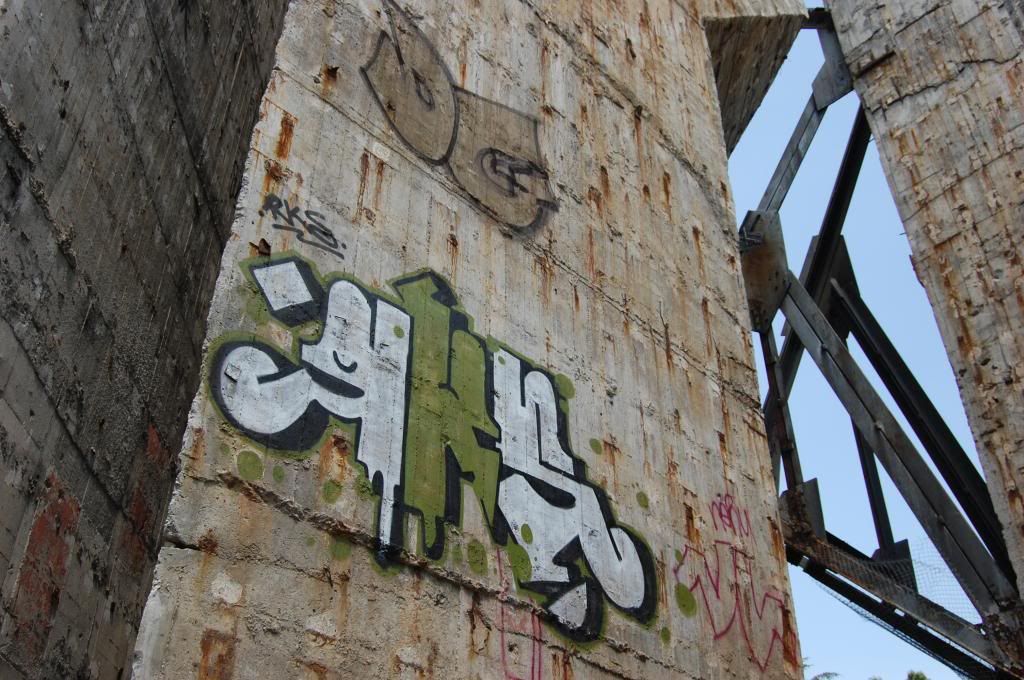We are still heading east towards the Black Sea, taking it easy and working up only a pretty leisurely pace. Yesterday, having eaten and slept well only yards from Bulgaria's current round of anti-government protests, we picked up a hire car (Is it normal for a SEAT Córdoba to appear to be very badly built? Squeaking and rattling madly right from the word go?) and started out for the coast. About the journey, and about our stopover in Lovech: more later. In the meantime, a quick look back at one of Sofia's real curiosities.
On arriving in the Bulgarian capital, we were immediately surprised by the sheer quantity of graffiti and street art smothering on the city's walls and street furniture. In Europe, surely only Berlin can rival Sofia when it comes to the volume of spray can work on display. But Sofia's graffiti writers can trump their German counterparts in one respect - the extent to which they have got away with defacing (improving?) major monuments in their home town.
Most famously, a monument honouring the Red Army in World War Two was given a colourful temporary makeover a couple of years ago, with the bronze socialist-realist figures of heroic Soviet soldiers transformed into figures from American popular culture including Superman, Captain America and Ronald McDonald. We didn't see that monument (presumably still in the condition to which it was restored once the Banksyesque references to comic books and fast food had been scrubbed clean), but we did spend some time walking around what remains of a 32 metre-high structure built in 1981 to mark the occasion of the 1300th anniversary of the foundation of the First Bulgarian Empire. Not for the first time, our slim Thomas Cook guidebook proved to be woefully short of information, simply describing this large monument in terms of being ugly. So we were not prepared for the structure's state of extreme dilapidation or for the fact that the more easily reachable sections of its crumbling surfaces are liberally covered with large, colourful pieces of graffiti. None of this appears to be of a political nature. Just the standard braggadocio of the spray can artist, as far as we could see, but shocking, nevertheless, simply for having been applied to such a prominent piece of state-sponsored sculpture, albeit one that has perhaps never been loved by the Bulgarian public. Writing for a popular architecture news website, Alison Furoto informs us that the monument was completed in a hurry, resulting in poor quality work. So much so, apparently, that marble plates covering the construction began to fall off just four years after the inauguration of the piece. This must have caused something of a safety issue because we could clearly see that the monument had been designed to encourage visitors to come very close to its intertwining structures (meant to symbolise the past, present and future, according to Furoto). The base of the now-ruined monument is set in a kind of trench, some metres below the lawns of the large park in which it is set. In its brief heyday, it would have been approached via concrete steps leading down from the paths criss-crossing the park. Furoto writes that the monument was "completely abandoned by the authorities" by the early 1990s. A fence does surround the vast structure, but this is also in a very poor state and it is very easy to gain access to the crumbling steps and to the base of the monument. Moreover, none of the Sofia citizens snogging on benches or walking their pooches batted an eyelid when I cleared the fence, walked down the steps and got busy with the camera.
We liked Sofia. Even with protests in progress and police vehicles in abundance as a result, the city seemed to have a pleasantly laid back sort of vibe. There are also a good number of points of interest in the standard touristy sense - churches, major public buildings etc. But I don't think I'm being uncharitable when I describe the Bulgarian capital as having a rather worn appearance. The graffiti everywhere is just one part of this. You will also notice that the city's infrastructure is crumbling. Loose and missing paving stones are expertly navigated by the many chic ladies in their vertiginous high heels. But I certainly lost my footing and turned my ankle more often than I would in London. Many buildings, too, looked a bit unloved. But even in this context, nothing really prepared me for the visual effect of a huge monument in prominent location having been thoroughly vandalised and left to rot for many years. The effect, however, was one that I found strangely beautiful.









 Back to TOP
Back to TOP
0 comments:
Post a Comment